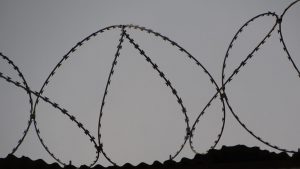The Manitoba Hydro Place headquarters is the first large office tower in Canada to receive Platinum certification under leadership in energy and environmental design (LEED) from the Canada Green Building Council (CaGBC).
WINNIPEG
Manitoba Hydro Place, the “game-changing” headquarters designed to meet the extremely challenging objectives of the fourth largest energy utility in Canada, has been granted LEED Platinum certification for sustainability, exceeding its original goal to achieve LEED Gold.
The project is the first and only large office tower in Canada to date to receive LEED Platinum certification from the Canada Green Building Council (CaGBC).
Opened in 2009, the 22-storey building occupying a full city block in Winnipeg’s downtown is the achievement of an integrated design process involving close collaboration between Manitoba Hydro and design architects Kuwabara Payne McKenna Blumberg Architects of Toronto, executive architects Smith Carter Architects and Engineers of Winnipeg and climate engineers Transsolar of Stuttgart.
“The Canada Green Building Council would like to congratulate those who worked on Manitoba Hydro Place for helping it receive LEED Platinum, the highest and most rigorous level of certification that can be achieved,” said Thomas Mueller, president and CEO of the CaGBC.
“In order to meet such a high standard, the design team had to take the extra step and look at innovative design and construction strategies. This resulted in exceptional energy performance.”
Manitoba Hydro meticulously tracked the performance for two years to determine whether its new building is living up to its initial ambitious goals.
Compared to the average office tower, Manitoba Hydro Place records reductions of more than 70 per cent in energy use. Conventional office towers typically use over 300kW.h. per square metre.
Manitoba Hydro’s usage is under 85kW.h., an estimated energy savings of over $500,000 annually. In fall 2012, Manitoba Hydro is expected to publicly release the full schedule of performance results.
“The building has become a beacon that attracts visitors from around the world.” said Tom Akerstream, Manitoba Hydro’s energy adviser and manager of head office facilities.
“We have hosted senators from the United States, Canada and executives from Apple Inc. who have come to study Canada’s successful new model for energy efficient, climatically responsive design.”
Akerstream said the utility’s main intent was to demonstrate “that creating the most energy efficient, sustainable building also meant providing the highest quality of space.
“While our original goal was LEED Gold, we are absolutely honoured to have reached LEED Platinum status.”
Bruce Kuwabara, the design architect for KPMB Architects, said the future in sustainable architecture lies in being open to experimentation, communication and collaboration at every step of the process which is integral to green building.
“Manitoba Hydro Place demonstrates that one building can simultaneously create a synthesis of design excellence, integrated high performance sustainability, air quality, healthy work environment and city revitalization,” he said.
“To achieve LEED Platinum proves that this is the way forward to low carbon and climate responsive design.”
Scott Stirton of Smith Carter Architects said Manitoba Hydro Place has put Winnipeg on the map for innovative building,
The building’s gleaming solar chimney, flight of windows that open and close in response to the weather conditions, six-storey waterfall in the atrium, geothermal system for heating and cooling and green rooftop are among its key features.
“The signature building has established Winnipeg as an essential destination for architects, engineers and energy specialists from around the globe to view first-hand its cutting-edge integration of design and energy efficient technologies.”
Thomas Auer of Transsolar Engineering said LEED Platinum reinforces Manitoba Hydro Place as a model for integrated, holistic design.
“Every element supports the overall function and most importantly the employees feel great in the building and the design has a positive impact on the quality of Winnipeg’s downtown.”
In the past two years, the project has been recognized with more than ten major awards for innovation, architectural and urban design excellence and green design.
Among these awards were the 2009 Council on Tall Buildings and Urban Habitat Best Tall Building in the Americas award and the 2011 RAIC Innovation in Architecture award.
DCN NEWS SERVICES










Recent Comments
comments for this post are closed